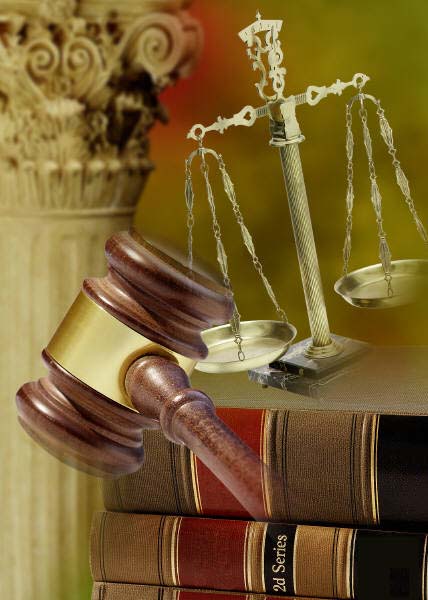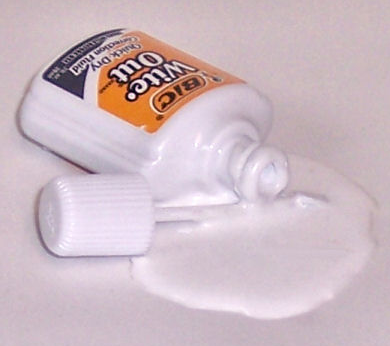As we noted on Thursday and Friday, eDiscoveryDaily published 78 posts related to eDiscovery case decisions and activities over the past year, covering 62 unique cases! Friday, we looked back at cases related to production format disputes, search disputes and technology assisted review. Today, let’s take a look back at cases related to proportionality and the first half of the cases related to sanctions (yes, there were that many).
We grouped those cases into common subject themes and will review them over the next few posts. Perhaps you missed some of these? Now is your chance to catch up!
PROPORTIONALITY / COOPERATION
There were certainly at least a handful of cases where proportionality of eDiscovery and cooperation between parties was at issue, including the most viewed post in the history of this blog. Here are three such cases:
Is a Blended Document Review Rate of $466 Per Hour Excessive? Remember when we raised the question as to whether it is time to ditch the per hour model for document review? One of the cases we highlighted for perceived overbilling was ruled upon last month. In the case In re Citigroup Inc. Securities Litigation, New York District Judge Sidney H. Stein rejected as unreasonable the plaintiffs’ lead counsel’s proffered blended rate of more than $400 for contract attorneys—more than the blended rate charged for associate attorneys—most of whom were tasked with routine document review work.
Court Rejects Defendants’ Claim of Undue Burden in ERISA Case. In the case In re Coventry Healthcare, Inc.: ERISA Litigation, Maryland Magistrate Judge Jillyn K. Schulze rejected the defendants’ claim of undue burden where they failed to suggest alternatives to using the plaintiffs’ search terms and where they could enter a clawback order to eliminate the cost of reviewing the data for responsiveness and privilege.
Court Agrees with Defendant that Preserving 5 Terabytes of Data is Enough. In United States ex rel. King v. Solvay, S.A., Texas District Judge Gray Miller granted the defendant’s request for a protective order where the plaintiffs only offered generalized, unsupported claims to support their request to extend and expand discovery.
SANCTIONS
Yes, once again, the topic with the largest number of case law decisions related to eDiscovery is those decisions related to sanctions. Of the 62 cases we covered this past year, over 40% of them (26 total cases) related to sanctions, either due to spoliation issues or inadequate or untimely productions, many of which were granted, but some were denied. Here are the first 13 cases:
Company Should Have Preserved Personal eMails, But No Sanctions (Yet). In Puerto Rico Telephone Co. v. San Juan Cable LLC, Puerto Rico Magistrate Judge Bruce J. McGiverin found that “plaintiff has proffered sufficient evidence to establish that [the defendant] OneLink failed to preserve relevant emails within its control”, but denied the plaintiff’s request for sanctions at this time because of the “absence of bad faith” on the defendant’s part and the plaintiff’s failure to demonstrate prejudice.
The Ubiquitous Apple Samsung Case and “Patentgate”. When something gets the “gate” suffix added to it, that’s not a good thing. It’s hard to believe that a case can get more intense than when a billion dollar verdict is awarded (later reduced to a measly $599 million, then increased back up to $930 million), but the Apple v. Samsung case seems to only be getting more intense, due to the disclosure of confidential agreements that Apple had with Nokia, Ericsson, Sharp and Philips – now widely referred to as “patentgate”.
Duty to Preserve Triggered When Litigation is “Imminent”, Not “Reasonably Foreseeable”. In the case In re Pradaxa (Dabigatran Etexilate) Products Liability Litigation, Chief District Judge David R. Herndon ruled that at least in the Seventh Circuit, the duty to preserve is triggered not when litigation is “reasonably foreseeable” but when “a litigant knew or should have known that litigation was imminent.”
Leaving Your Hard Drives in a Rental House is Negligent, Court Rules. In Net-Com Services, Inc. v. Eupen Cable USA, Inc., the plaintiff’s destruction of evidence was negligent where its principal failed to take steps to preserve evidence he had stored in a home he rented to nonaffiliated lessees.
Despite Missing and Scrambled Hard Drives, Court Denies Plaintiff’s Request for Sanctions. In Anderson v. Sullivan, a Pennsylvania court found “that no sanctions are warranted” despite the disappearance of one hard drive, “scrambling” of another hard drive and failure to produce several e-mails because the evidence was not relevant to the underlying claims and because there was no showing the defendants intentionally destroyed evidence.
Court Awards Sanctions, But Declines to Order Defendants to Retain an eDiscovery Vendor – Yet. In Logtale, Ltd. v. IKOR, Inc., California Magistrate Judge Donna M. Ryu granted the plaintiff’s motion to compel responses to discovery and awarded partial attorney’s fees as a result of defendants’ conduct. The judge did not grant the plaintiff’s request to order Defendants to retain an eDiscovery vendor to conduct a thorough and adequate search for responsive electronic documents, but did note that the court would do so “if there are continuing problems with their document productions”.
Imagine if the Zubulake Case Turned Out Like This. You’ve got an employee suing her ex-employer for discrimination, hostile work environment and being forced to resign. During discovery, it was determined that a key email was deleted due to the employer’s routine auto-delete policy, so the plaintiff filed a motion for sanctions. Sound familiar? Yep. Was her motion granted? Nope.
Scheindlin Reverses Magistrate Judge Ruling, Orders Sanction for Spoliation of Data. If you’re hoping to get away with failing to preserve data in eDiscovery, you might want to think again if your case appears in the docket for the Southern District of New York with Judge Shira Scheindlin presiding.
Permissive Adverse Inference Instruction Upheld on Appeal. In Mali v. Federal Insurance Co., the Second Circuit explained the distinctions between two types of adverse inference instructions: a sanction for misconduct versus an explanatory instruction that details the jury’s fact-finding abilities. Because the lower court opted to give a permissive adverse inference instruction, which is not a punishment, the court did not err by not requiring the defendant to show that the plaintiffs acted with a culpable state of mind.
Default Judgment Sanction Upheld on Appeal. In Stooksbury v. Ross, the Sixth Circuit upheld the entry of default judgment as a sanction against defendants that repeatedly failed to comply with discovery obligations, including producing a “document dump” of tens of thousands of pages of nonresponsive information that prejudiced the plaintiffs.
Spoliation Sanctions Can Apply to Audio Files Too. In Hart v. Dillon Cos., Colorado Magistrate Judge David L. West granted the plaintiff’s Motion for Sanctions for Spoliation of Evidence for failing to preserve a tape recorded interview with the plaintiff and set a hearing and oral argument as to what sanctions should be imposed for October.
Printed Copies of Documents Not Enough, Spoliation Sanctions Upheld for Discarding Computer. On May 30, the Appellate Division of the Supreme Court of New York, First Department upheld a spoliation sanction against a plaintiff that failed to preserve electronic files and discarded his computer containing those files.
Appellate Court Denies Sanctions for Routine Deletion of Text Messages. In PTSI, Inc. v. Haley, the appellate court denied a motion for spoliation sanctions where the defendants routinely deleted text messages and other data to “clean up” their personal electronic devices: the volume of messages and limited amount of phone storage made it difficult to retain all data and still use the phone for messaging.
Tune in tomorrow for the remaining thirteen sanctions cases in 2013!
So, what do you think? Did you miss any of these? Please share any comments you might have or if you’d like to know more about a particular topic.
Disclaimer: The views represented herein are exclusively the views of the author, and do not necessarily represent the views held by CloudNine Discovery. eDiscoveryDaily is made available by CloudNine Discovery solely for educational purposes to provide general information about general eDiscovery principles and not to provide specific legal advice applicable to any particular circumstance. eDiscoveryDaily should not be used as a substitute for competent legal advice from a lawyer you have retained and who has agreed to represent you.






